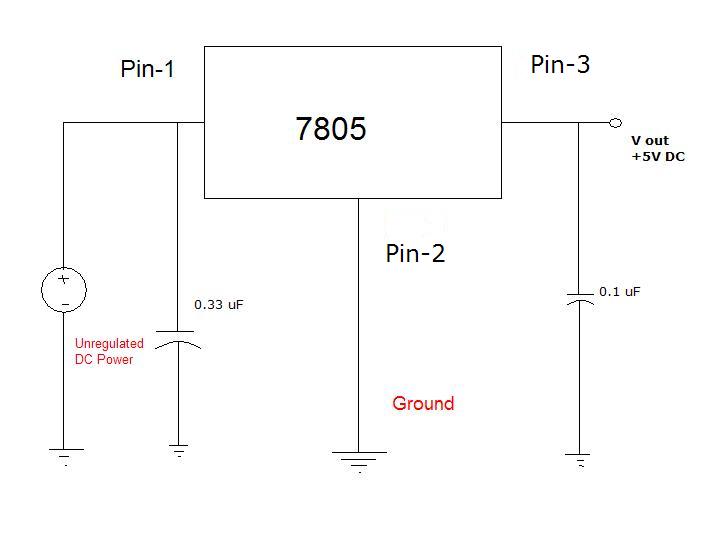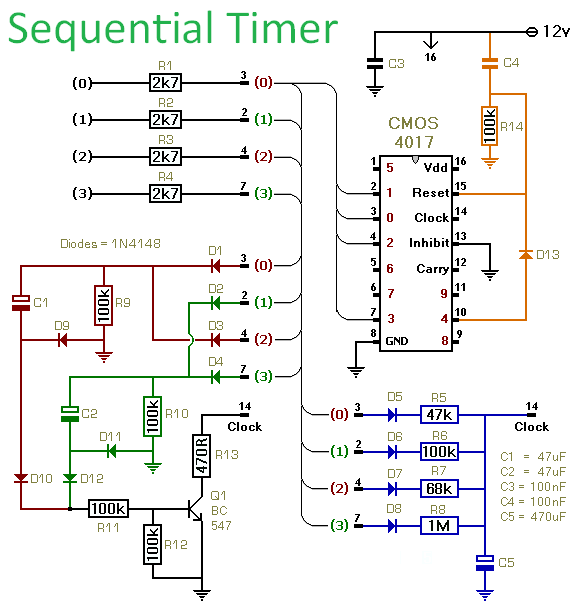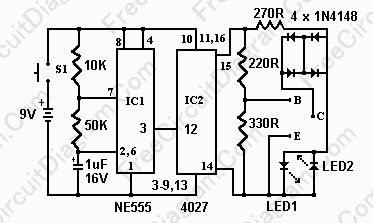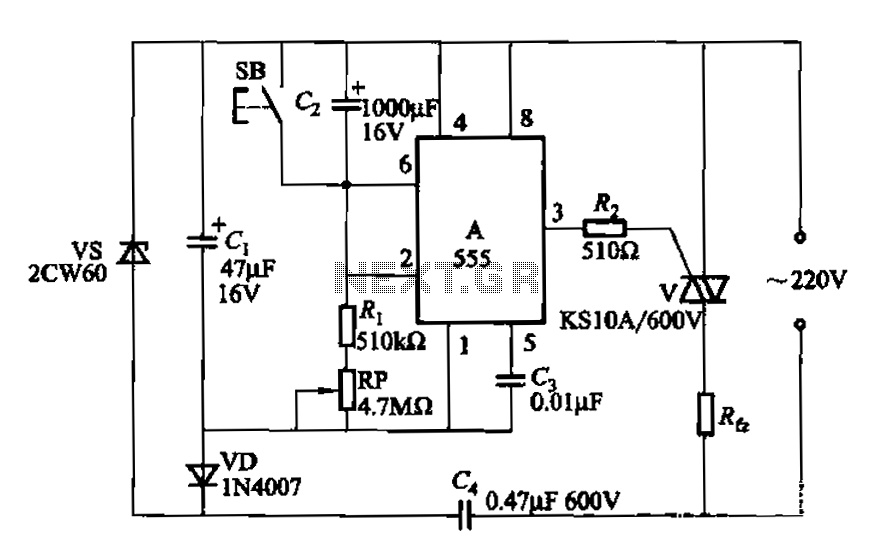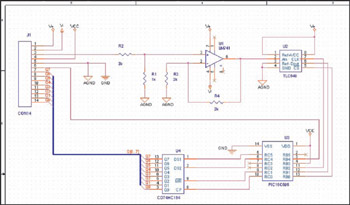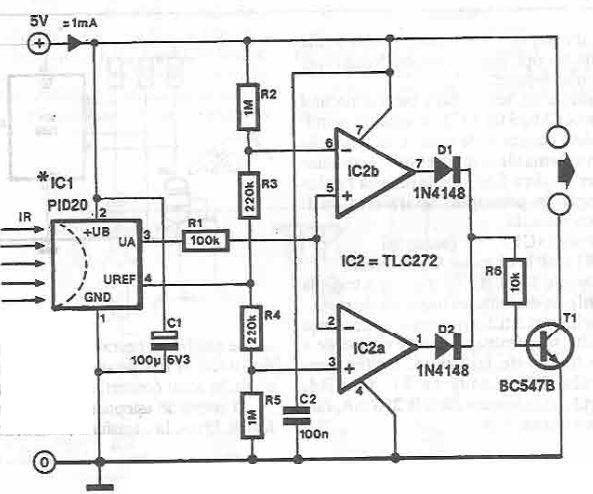
Noise-producing sound effects using NE555
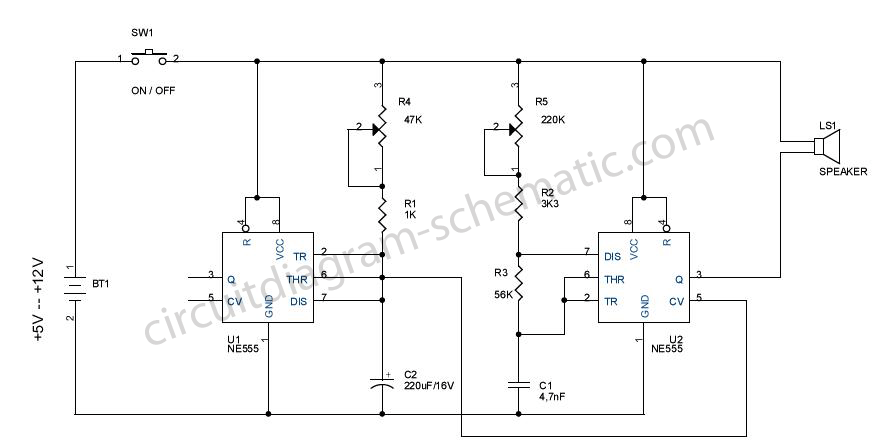
The tools used in this circuit are designed to create a noisy atmosphere. This circuit is relatively simple and is controlled by two 555 timer integrated circuits (ICs), assisted by other discrete components such as resistors and capacitors. The first 555 timer, U2, generates a tone that can be adjusted using a potentiometer, R5. The output from U2 is fed directly to the speaker or speakers. However, the speaker will not produce a constant tone due to modulation from the sawtooth waveform generated by U1. The sawtooth frequency can be adjusted using the potentiometer, R4. The final output is a modulated signal with varying high and low tones that can be configured with R5, while the modulation rate is determined by R4.
The circuit consists of two primary components: the tone generator (U2) and the modulation source (U1). The 555 timer IC (U2) is configured in astable mode, allowing it to produce a continuous square wave output. The frequency of this output can be modified by adjusting the resistance value of the potentiometer R5, which is connected in the timing network of the 555 timer. This enables the user to select different tones that will be transmitted through the speaker.
The modulation of the tone is achieved by the second 555 timer IC (U1), which is also configured in astable mode to generate a sawtooth waveform. This waveform serves as the modulation signal for the output of U2. The frequency of the sawtooth waveform can be adjusted using potentiometer R4, allowing for control over the modulation rate. The interaction between the tone generated by U2 and the modulation from U1 results in a complex audio output that varies in pitch and amplitude, creating the desired noisy atmosphere.
The circuit's design allows for flexibility in sound generation, making it suitable for applications such as sound effects in electronic devices or artistic audio installations. The use of discrete components, such as resistors and capacitors, in conjunction with the 555 timer ICs, provides reliability and ease of assembly. The schematic would illustrate the connections between the two 555 timers, the potentiometers, and the speaker, demonstrating how the modulation and tone generation work together to create the final audio output.Tools that created this is to produce noisy atmosphere. This circuit is quite simple, this circuit controlled by two 555 timer IC is assisted by other discrete component resistors and capacitors. The first 555 timer U2 will generate a tone which can be heard on the frequency can be set using a potentiometer R5.
next U2 output is given directly to the speaker or speakers. But in this case the speaker will not produce a constant tone. This is because the U2 is modulated by the sawtooth waveform generated by U1. The following is a schematic drawing: Sawtooth frequency that can be set using the potentiometer R4. The end result will be obtained modulated signal high and low tones that can be arranged with R5 while the modulation rate set by R4. 🔗 External reference
The circuit consists of two primary components: the tone generator (U2) and the modulation source (U1). The 555 timer IC (U2) is configured in astable mode, allowing it to produce a continuous square wave output. The frequency of this output can be modified by adjusting the resistance value of the potentiometer R5, which is connected in the timing network of the 555 timer. This enables the user to select different tones that will be transmitted through the speaker.
The modulation of the tone is achieved by the second 555 timer IC (U1), which is also configured in astable mode to generate a sawtooth waveform. This waveform serves as the modulation signal for the output of U2. The frequency of the sawtooth waveform can be adjusted using potentiometer R4, allowing for control over the modulation rate. The interaction between the tone generated by U2 and the modulation from U1 results in a complex audio output that varies in pitch and amplitude, creating the desired noisy atmosphere.
The circuit's design allows for flexibility in sound generation, making it suitable for applications such as sound effects in electronic devices or artistic audio installations. The use of discrete components, such as resistors and capacitors, in conjunction with the 555 timer ICs, provides reliability and ease of assembly. The schematic would illustrate the connections between the two 555 timers, the potentiometers, and the speaker, demonstrating how the modulation and tone generation work together to create the final audio output.Tools that created this is to produce noisy atmosphere. This circuit is quite simple, this circuit controlled by two 555 timer IC is assisted by other discrete component resistors and capacitors. The first 555 timer U2 will generate a tone which can be heard on the frequency can be set using a potentiometer R5.
next U2 output is given directly to the speaker or speakers. But in this case the speaker will not produce a constant tone. This is because the U2 is modulated by the sawtooth waveform generated by U1. The following is a schematic drawing: Sawtooth frequency that can be set using the potentiometer R4. The end result will be obtained modulated signal high and low tones that can be arranged with R5 while the modulation rate set by R4. 🔗 External reference
